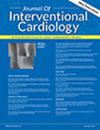Objectives. To determine if radial artery (RA) access compared with femoral artery (FA) access for percutaneous coronary intervention (PCI) is associated with a lower incidence of acute kidney injury (AKI). Background. AKI results in substantial morbidity and cost following PCI. Prior studies comparing the occurrence of AKI associated with radial artery (RA) versus femoral artery (FA) access have mixed results. Methods. Using a large state-wide database, 14,077 patients (8,539 with RA and 5,538 patents with FA access) were retrospectively compared to assess the occurrence of AKI following PCI. To reduce selection bias and balance clinical data across the two groups, a novel machine learning method called a Generalized Boosted Model was conducted on the arterial access site generating a weighted propensity score for each variable. A logistic regression analysis was then performed on the occurrence of AKI following PCI using the weighted propensity scores from the Generalized Boosted Model. Results. As shown in other studies, multiple variables were associated with an increase in AKI after PCI. Only RA access (OR 0.82; 95% CI 0.74–0.91) and male gender (OR 0.80; 95% CI 0.72–0.89) were associated with a lower occurrence of AKI. Based on the calculated Mehran scores, patients were stratified into groups with an increasing risk of AKI. RA access was consistently found to have a lower risk of AKI compared with FA access across these groups of increasing risk. Conclusions. Compared with FA access, RA access is associated with an 18% lower rate of AKI following PCI. This effect was observed among different levels of risk for developing AKI. Although developed from a retrospective analysis, this study supports the use of RA access when technically possible in a diverse group of patients.



